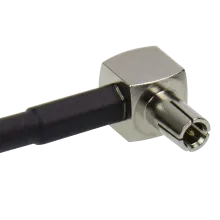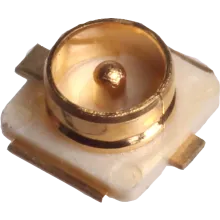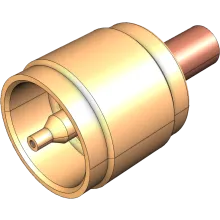This document has been composed to provide a industry reference for radio frequency connectors. The table below has been compiled against applicable ISO/IEC/MIL standards, with the generous assistance from industry leading manufacturers who have been listed below. While comprehensive, this list is not to be considered exhaustive and does not include manufacturer-specific designs.
Gender Designation
RF connector genders are designated either Male (Plug) or Female (Jack) based on the physical characteristics of the connector body and centre contact. IEEE Std 315-1975 provides limited insight stating only that the female/receptacle/jack is usually stationary, and the male/plug is usually movable. IEC 61169 suggests gender is designated on the basis of whether the centre contact consists of a pin or socket. In the absence of any restrictive standard, the accepted practice is to designate on the basis of the following:
- Male or Plug Connector: Centre contact consists of a pin. Body typically features the active part of the coupling mechanism (e.g. coupling nut).
- Female or Jack Connector: Centre contact consists of a receptacle/socket. Body features a coupling mechanism complementary to the plug.
- Genderless Connector: Coupling mechanism does not utilise standard pin-socket contacts. Connector has both male and female (hermaphrodic) elements or surfaces.
Certain connector series, such as SMB, complicate the above ruling whereby the Male connector (i.e., connector with the pin) has a Jack body (i.e., body has no active coupling mechanism), and Female (i.e., connector with the socket) has a Plug body featuring the active coupling mechanism.
Reverse Polarisation
Several connector series also offer a reverse-polarised sub-series in which the connector gender is reversed by swapping the pin and receptacle into the opposing gender's body. For example, a Reverse Polarity Male connector will consist of the Male body with a female socket/receptacle. Reverse Polarity series are named by conjoining the prefix "RP-" to the connector series name, for example, Reverse Polarity SMA connectors are named RP-SMA.
Browse RF Connector Series
| Series | Description | Max. Freq. | Image |
|---|---|---|---|
TS-9 |
TS-9 (or TS9) is an uncommon RF coaxial connector found in cellular devices such as 3G and 4G mobile broadband modems to support connection of an external antenna. The connector passes frequencies up to around 3 GHz. The TS-9 Female connector comprises a very simple circular brass housing with an outer diameter of 3.5 mm. The connector is typically attached to the PCB by a Surface Mount or End ... Also known as |
3 GHz | 
|
U.FL |
U.FL RF connectors, also known as Ultra Miniature Coaxial connectors, are PCB/board-mount miniature RF connectors designed by Hirose Electric. These connectors are characterised by their small size, lightweight, and high-frequency performance, making them ideal for applications in space-constrained environments. Physically, U.FL connectors are compact, with a nominal impedance of 50 ohms. They ... Also known as IPEX MHF, LTI IPX, AMC, UMCC |
6 GHz | 
|
UHF |
The UHF series is a low cost, low frequency connector with a screw coupling. The maximum usable frequency is limited to 200 MHz, as the impedance of the connector is not controlled. Flexible cables up to 11 mm in diameter can be used. Soldering and crimping techniques are used for terminating these connectors. Applications for the UHF connectors are for low-frequency communication equipment. Also known as |
0 GHz | 
|
Pagination
RF Series by Frequency
The chart below depicts the maximum operating frequency range of RF Connector Series. The maximum value of a series may include precision variations and as such does not apply for all manufacturer variations.